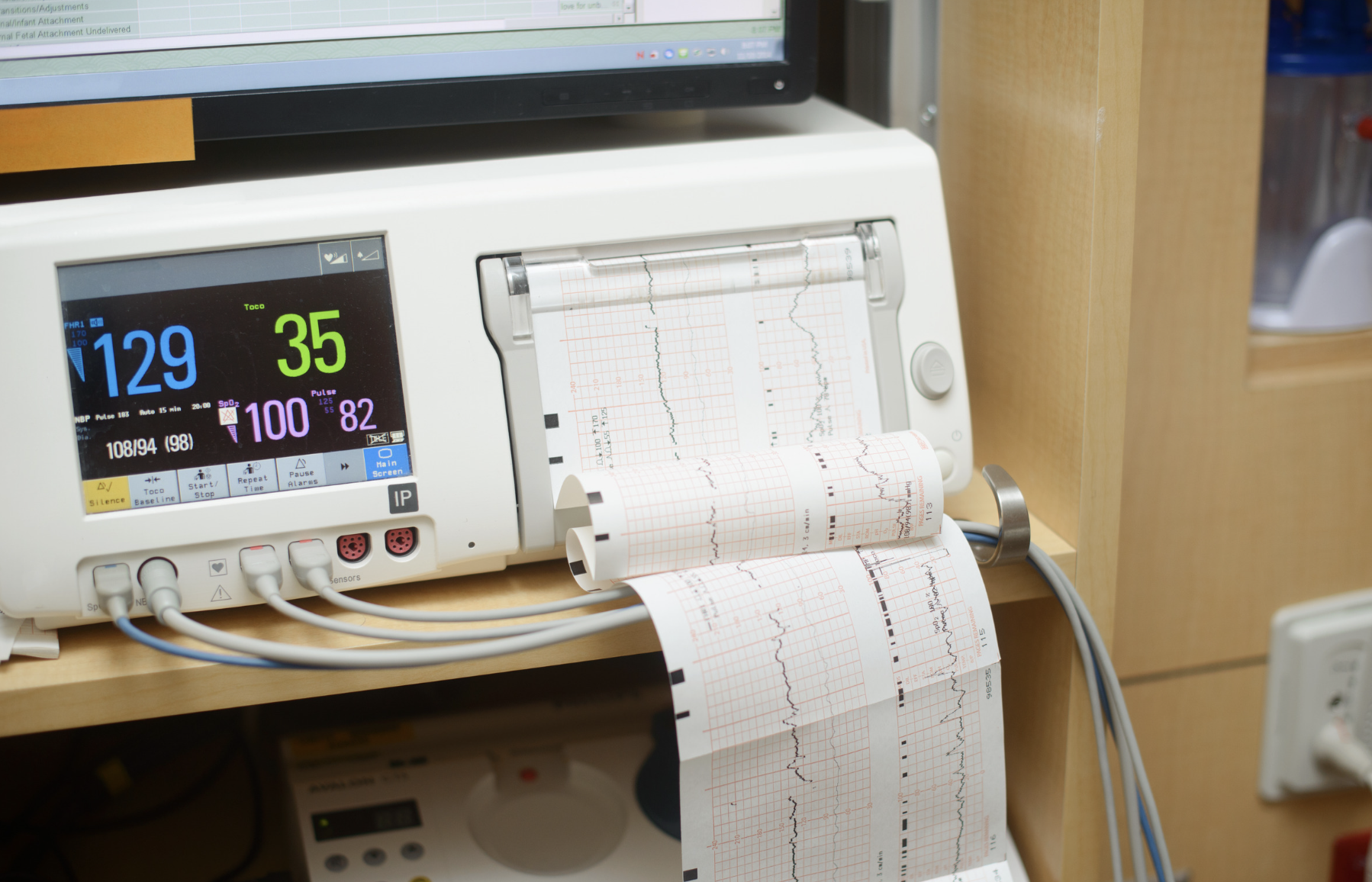Kirsten Fisch, MSN, RNC-MNN, IBCLC, LCCE Kirsten is a women's health nurse who specializes in high-risk pregnancy and postpartum care. She is certified in Maternal Newborn Nursing, a board-certified lactation consultant (IBCLC), and a Lamaze Certified Childbirth Educator. She works with women from conception through the postpartum period. Passionate about empowering women throughout their reproductive journeys, Kirsten combines evidence-based care with compassionate support to promote the health and well-being of mothers and babies.
Welcoming a new baby is filled with anticipation, emotion, and important decisions. One of the tools commonly used during labor to ensure both the birthing person and baby are doing well is Electronic Fetal Monitoring (EFM). But what exactly is EFM, and what role does it play during labor? Let’s break it down in simple terms.
What Is Electronic Fetal Monitoring?
EFM is a method healthcare providers use to track the baby’s heart rate and the birthing person’s contractions during labor. This is done using external or internal sensors connected to a monitor. The goal is to assess how the baby handles labor and whether any interventions might be needed to keep both mother and baby safe.
There are two main types of EFM:
- External Monitoring: Two belts are placed around the abdomen—one measures the baby’s heart rate, and the other tracks the frequency and duration of contractions.
- Internal Monitoring: Used when more precise readings are needed, this involves placing a small electrode on the baby’s scalp and a pressure sensor in the uterus. It requires breaking the amniotic sac and some cervical dilation.

Why Is EFM Used?
The primary goal of EFM is to detect signs of fetal distress—situations where the baby may not be getting enough oxygen, which can lead to complications. By identifying problems early, care teams can make timely decisions, such as changing the birthing person’s position, giving medications, or in some cases, recommending a cesarean birth.
Continuous vs. Intermittent Monitoring
- Continuous Monitoring means the baby’s heart rate and contractions are tracked throughout the labor process without interruption.
- Intermittent Monitoring involves checking the heart rate at set intervals, often with a handheld Doppler device or a fetoscope.
Both methods have benefits and drawbacks. Continuous monitoring may be recommended for high-risk pregnancies or if complications arise. However, studies have shown that routine continuous EFM in low-risk pregnancies does not always improve outcomes and may increase the likelihood of unnecessary interventions, like C-sections or the use of vacuum or forceps.
Benefits of EFM
- Provides real-time data on the baby’s well-being.
- Allows quick response to signs of distress.
- Offers reassurance to families and healthcare providers.
Potential Drawbacks
- Mobility may be limited during labor if external belts are used continuously.
- This can lead to the over-interpretation of data and unnecessary interventions.
- In some cases, it may increase maternal stress or discomfort.

What Can You Do?
If you’re preparing for labor, here are a few ways to advocate for your preferences:
- Ask questions about why EFM is being recommended for you.
- Discuss monitoring options with your provider during prenatal visits.
- Include your preferences in a birth plan, remembering that flexibility is often necessary during labor.
- Stay informed about the pros and cons of EFM, especially if you have a low-risk pregnancy.
Valuable Tool or Intrusion?
Electronic fetal monitoring is a valuable tool in modern obstetrics, but like any medical intervention, it should be used thoughtfully and in the context of each unique labor experience. Understanding how and why EFM is used empowers families to make informed decisions and actively participate in their birth journey.
Whether you’re planning a hospital birth, working with a midwife, or just curious about what labor might look like, knowing the basics of EFM can help reduce anxiety and support a safe and positive birth experience.

Kirsten Fisch, MSN, RNC-MNN, IBCLC, LCCE Kirsten is a women's health nurse who specializes in high-risk pregnancy and postpartum care. She is certified in Maternal Newborn Nursing, a board-certified lactation consultant (IBCLC), and a Lamaze Certified Childbirth Educator. She works with women from conception through the postpartum period. Passionate about empowering women throughout their reproductive journeys, Kirsten combines evidence-based care with compassionate support to promote the health and well-being of mothers and babies.



